Winter is coming sooner rather than later, and for those of us that love the outdoors it means one of the best times of the year. Winter Camping. Going on a winter camping trip can give you some of the best views, the most serene landscapes, the best fishing, and some of the least crowded trails and camping grounds of the year. While winter camping can be one of the greatest joys in life, there are certain pit falls that come with going on a winter camping trip.
Depending on which area of the world you are in there are many different things you must consider before you begin your camping adventure. Between choosing the proper equipment, preparing for the potential winter storms, and making sure that you have all the information possible, preparing for a winter camping trip can be overwhelming. The good news is that we will go over some various cold weather camping tips that will help keep you and your group safe and happy on your trip.
Before The Trip
Before you even starting purchasing the equipment you will need to keep yourself safe on your trip, you must evaluate where you are going, what you will be doing, and a myriad of other safety precautions.

It is imperative that before you start your journey you have a definitive plan in place.
- While the serenity of camping during winter can be truly breathtaking, it is important that you do not go out on your own. Winter can be the most dangerous month of the year for camping, and without a partner or group to go with you, you can find yourself in a very bad situation with little to no help very quickly.
- Plan when you are going carefully. Check what the weather will be like during different parts of winter for whatever location you have chosen. The last thing you want is to get to your destination and be stuck in the middle of a terrible storm. The NWS has detailed weather reports you can use to determine what you should expect.
- Check for potential avalanche areas. If you plan on going on a ski expedition you will need to make sure that you are aware of any potential avalanche areas at your destination. If you find yourself going to a location with a high avalanche potential, you and your group should get formal avalanche safety training.
- Make a detailed plan. Make sure that everyone in the group is on the same page with an extremely detailed excursion plan. You should know where you will be making camp, where your destinations are, and the nearest emergency services are to where you will be. More important make sure that someone who is not in the group knows exactly where you will be going and how long you will be gone for.
- Make a checklist and check it twice. Create a list of all the equipment you will be needing to bring with you. Make sure to add extra food and dry clothing just in case you get lost or weather turns for the worse. Also bring some cash for any unexpected emergencies that may occur.
- Do some research on the area you are going. Reading up on people who have been where you are going can give you valuable insight on what you should expect from your trip.
Clothing and Gear
There is nothing more important when you are camping in the cold than the proper clothing. The biggest rule of winter is camping is to stay warm and dry at all times. Clothing should be able to wick away any moisture and rain, dry quickly, and be both warm and breathable. The general rule of thumb is to have three layers at all times when you are camping during winter.
The Base Layer
You base layer is basically just your under garments. Since this is the closest layer to your skin, you want to make sure that the clothing you chose for this layer is going to be able to wick away perspiration from your skin to the outer layers. For this layer you want to avoid cotton and aim for synthetic and merino wool clothing.
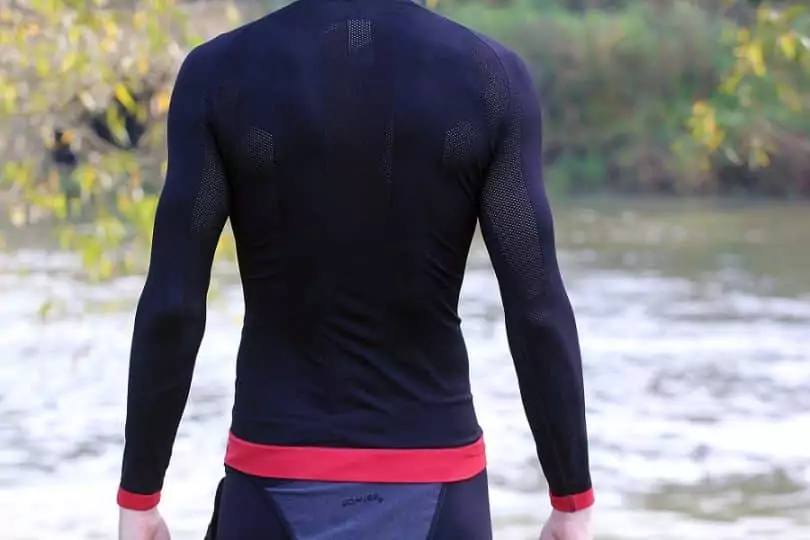
Image Credit: teamcycles.com
These materials dry extremely quickly, which will help you spend little to no time in wet clothing. Depending on the climate, it is common for winter campers to wear two base layers for optimal heating.
The Middle Layer
This layer is primarily used for retaining body heat, and overall warmth. Consider purchasing microfleece for this layer, as that material will provide the highest amount of heat retention. Whatever you go with, you want to make sure that this layer is providing the best heat.
The Outer Layer
The outer layer is also known as the “shell”. This layer is meant to be waterproof, windproof, and ideally breathable. Either Laminates or polyurethane-coated fabrics will work best for this layer, however laminates are considered the superior option. A lot of people do not consider this, but try to keep your outer layer fireproof as well, the last thing you want is a stray ember catching on your shell. This layer will be protecting you the most from the elements themselves, so do not skimp on the outer layer!
While your layers of clothing are important, you need to also make sure that you have the proper accessories to finish out your winter clothing.
Boots
While camping typically requires nothing more than a good pair of hiking boots, for winter camping you want to make sure you have a pair of boots that are both waterproof and sufficiently insulated.

If you plan on going skiing or snowboarding during your camping trip, you want to make sure that whatever boots you purchase have the proper bindings for your board and skis.
Socks
Socks should be warn in two layers at all times, and make sure that you have extra socks on you at all times. No one wants to have wet feet while you are tromping through the snow. Another good idea is to purchase high quality gaiters that can be used to keep the inside of your boots as dry as possible.
Hats
Consider purchasing a balaclava along with a good beanie to keep your head as warm as possible. Most of the heat in your body will be transferred through your head, so make sure that your head is properly covered.
Gloves
Gloves should have proper coverage and also allow for finger mobility. While you want to insure your hands are as warm as possible, you want to still have mobility in all your extremities.
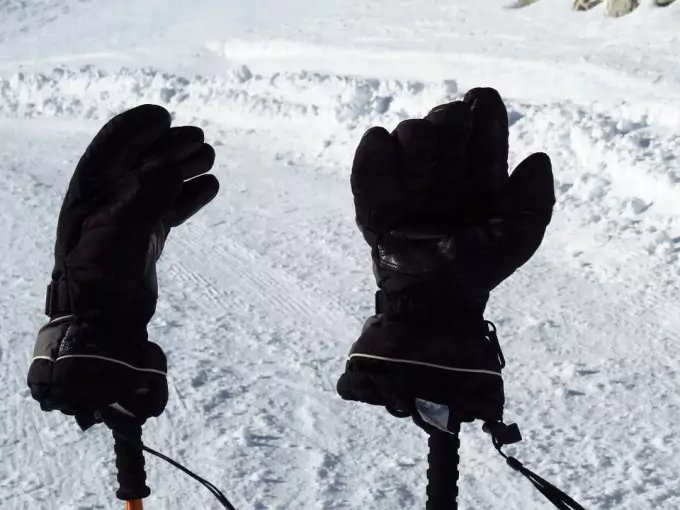
Mittens can be used on top of whatever gloves you decide to wear, just attach some sort of Para chord or rope from the mittens to your clothing so you can remove them quickly without losing them.
Eyewear
If you are a glasses wearer, then it is a good idea to get the proper eyewear to protect yourself from the elements as well as making sure that you will be able to see at all times. A good idea is to bring a pair of high quality prescription goggles and also a second pair of glasses in case something happens! Make sure that any goggles you get also have tinting to help prevent snow blindness.

When it comes to something as important as your eyesight, do not take any chances. Even if you do not wear glasses, a good pair of goggles will help to protect from the harsh cold winds of winter camping.
Once you have your clothing and accessories sorted out you want to make sure that you have the proper equipment to get through your journey safely. The proper equipment can make the difference between an easy journey and a journey that is fraught with problems.
Tent
Finding the right tent can be troubling, but the right tent will make a massive difference to you when you call it a night at your campgrounds. Surprisingly the smaller the tent the better! When you have a smaller tent you can heat up the inside easier than if you had a larger tent. With a smaller tent your body heat can sometimes bump the temperature inside the tent 20-25°.
You want to make sure that your tent is rated for the temperatures you will be traveling in.

While a tri-season tent may be ok for some climates, a specialized winter tent may be ideal for the climate you will camping in. If you expect a large amount of snow, or extremely low temperatures, the proper tent will make all the difference.
Here’s a list on the top portable heaters to keep you snug inside your tent – check it out!
Sleeping Bag & Ground Pad
Next to your tent your sleeping bag and ground pad will be the two most important pieces of gear in order to keep you warm through the night. When shopping for a sleeping bag, check the temperature ratings for each sleeping bag, and make sure that you use a bag that is rated at least 10° colder than the coldest temperatures you are expecting to encounter on your trip.
If you get too warm you can always remove clothing, but having a low rated sleeping bag will ensure that you are 100% warm at night. Here’s our list of the top down sleeping bags to make camping more warm and toasty for you, click on the link.

The other part of your sleeping arrangement is a ground pad or sleeping pad. Two layers on the bottom are worth one on the top, so making sure that you have a proper sleeping pad can make a cold night a warm night with little effort. We highly recommend using two pads to make sure you get the best heat retention.
A foam pad and a self-inflating pad will give you the best coverage, and make sure that if the inflate pad gets punctured you will still have some ground protection.
Backpack
A good backpack can really help with your exhaustion level while you are hiking to your camping grounds, but if you have too small of a pack you will not be able to pack all the equipment you will need.
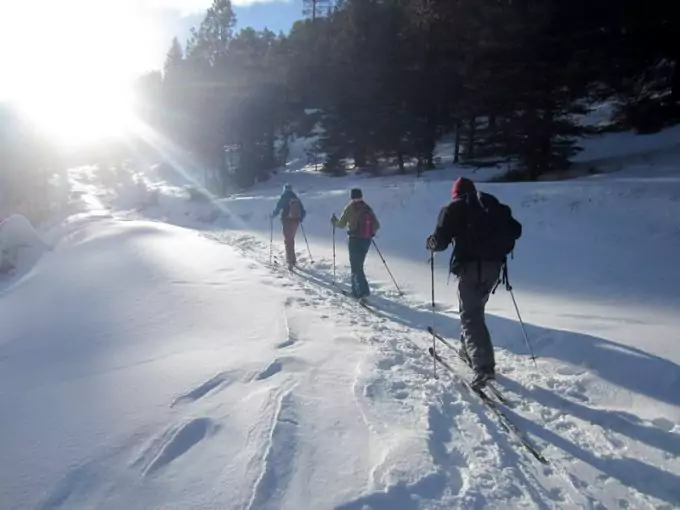
Depending on how long you plan on being out, you may want to consider getting a lightweight deluxe sized backpack to make sure that you can carry all of your gear. The more pockets and storage the better!
Lights, Camera, Batteries
Winter is known for having the longest and harshest nights of every season, so you want to make sure that you have the proper lighting to keep you safe for the long nights. Purchasing a good LED headlamp will give the illumination you need during the winter nights. Make sure that you have enough batteries for all of your lighting equipment and for whatever camera you chose to bring to capture your journey.
Communication
When you are traveling in the back countries of winter, you will often find yourself with little to no cell phone coverage. Make sure that your group has a way to communicate to each other and the outside world at all times. Satellite phones and high powered two way radios can be used to keep your group in contact with the world at all times.
Specialty Equipment
If you are planning on skiing, snowboarding, or fishing on your camping trip make sure that you bring all the appropriate winter gear that can get the job done well.

Also make sure that if you are going to be bringing specialty equipment that you have the necessary straps on whatever backpack you purchase to carry the equipment. You do not want to be hiking through the woods and have to hold onto a fishing pole the entire time.
Tips and Tricks
Bringing the best gear and clothing can only go so far, and you and your group will need to make sure that you have all the knowledge possible to make it through your journey safely. With a few tips and tricks, you can find yourself getting around in your winter wonderland with no problems what so ever.
Here’s our popular tips on how to prepare for your winter hike, check it out and be safe on the trail.
Getting your Bearings
If you are going to a location that has the potential for high amounts of sleet or snow, you may find yourself in danger of having your trails covered up. If this happens you want to make sure that you have all the possible routes in the area mapped out. Because of this you want to be certain that every single member of your group has the most up to date map of the area.

If you are using a GPS device, you want to have multiple routes to and from your camp site preprogrammed in. Anyone who finds themselves camping in a very mountainous region may want to pick up an altimeter to help determine exactly where you are.
Avalanche Safety
Campers who find themselves going on a camping trip in the mountains will want to make sure that they have all the avalanche safety equipment and training.
- Avalanche Transceiver: If you plan on traveling in any form of avalanche country you absolutely must have one of these for each member of your group. Learn how to use them, and keep it on you at all times.
- Snow Shovel: Everyone should have a snow shovel in their pack. While they are essential if any sort of avalanche happens, they will also be essential in the daily routine while you are camping in winter.
- Personal Locator Beacon: Whenever camping in a high avalanche possibility location, you want to make sure that you have a PLB on you at all times. If you activate the locator, the device will send out a signal to alert rescue teams of your exact location.
Create A Winter Camping Checklist
Before you even step a foot outside, you and your group should sit down, have a meeting and put together a checklist for all the gear and necessities you will need to bring with you. Everyone should be on the same page at all times, and everyone should have a copy of the checklist with them before they start packing.
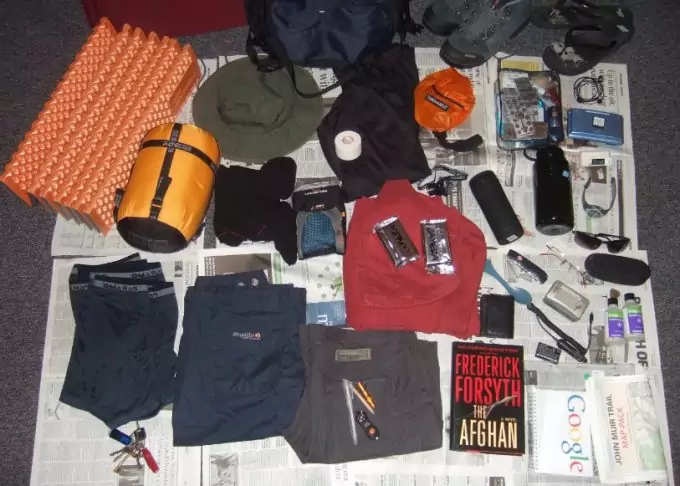
The last thing you want is to forget something that is important for your trip because the person who was supposed to bring it forgot.
Check Your Pack Twice
Once you have gone over your checklist, it is a good idea to lay all of your equipment out and go over it multiple times before you start packing. When you pack aim equally distribute the heavier objects with the smaller objects like blankets and clothes so they have a lower chance of shifting while you move around. Planning a day trip is easy, check our article on what to bring during your day hike for more information.
Winter camping can be one of the greatest adventures of your life, but without the proper preparation it can turn south on you quicker than you can imagine. If you follow the tips outlined in this article you will find yourself getting through the serene winter wonderland with no trouble what so ever. A final tip, whatever you do make sure to enjoy every moment you spend in the beautiful country!
For more tips and safety on the trail, see our list on the top mobile apps for hiking to help you explore with confidence.



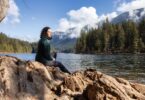



You cannot fail to prepare for winter camping. A good advice is to plan for temperatures ten degrees lower than what you expect and remember to consider the elevation because temperatures can drop 3.5 F degrees for every thousand feet of elevation. For cold weather camping also plan to bring food that is 3X than what you normally eat. Also don’t forget that you need to bring a white gas stove because canister stoves won’t work at cold temperatures.
There’s a lot to learn in making winter camping safe. I think you should also bring trekking poles, chemical hand and foot warmers, vaseline, and a good insulated pad. You need to make sure that there are people in the party that are experienced campers because the weather can magnify the seriousness of any errors.
Thanks for the tips Matthew! Being prepared is a no-brainer. You must not skimp on quality gear especially when camping to ensure your survival. I usually have a checklist which is a standard one I use for my camping trips. I usually have the list on my laptop which I frequently update. Being prepared is necessary and I hope the article has helped you a lot.
Being equipped with the right gear and being around people who are experienced campers are necessary. Stay positive and proactive. Going camping is a great outdoor activity and being prepared helps a lot in making sure you enjoy every bit of it.